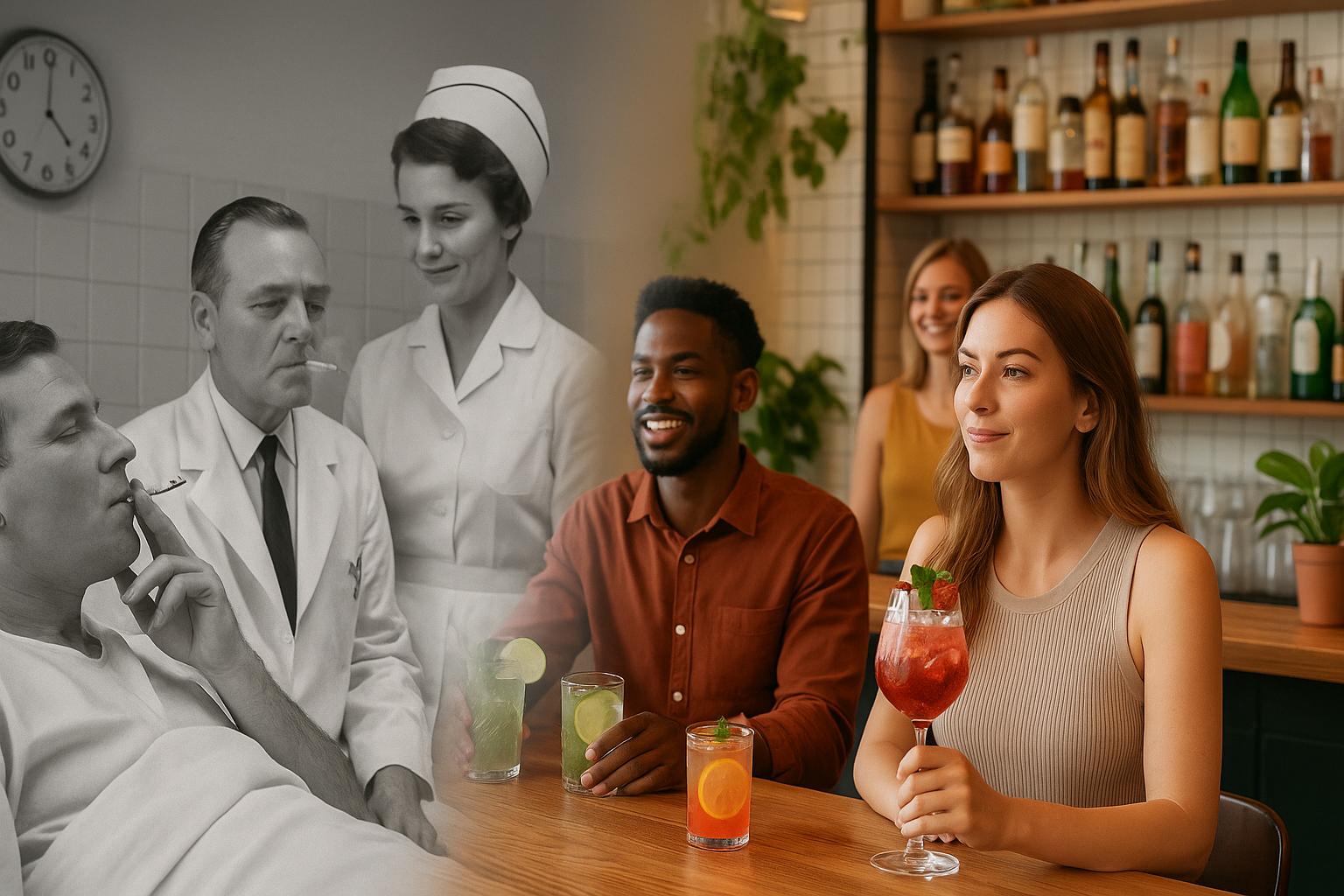1. The Mirror Effect: Social Acceptance to Social Rejection
In the 1960s, a man lighting up a cigarette indoors was simply being himself. Try doing that today, and you’re public enemy number one. The pattern’s repeating with alcohol.
The same generation that grew up watching Don Draper pour another scotch is now watching Gen Z proudly sip sparkling water or Athletic Brewing on TikTok. It’s not rebellion—it’s evolution.
The younger crowd isn’t interested in blacking out or showing off their hangover stories. Instead, they brag about being “clear-headed,” “disciplined,” and “in control.” Sound familiar? That’s exactly how the anti-smoking movement gained traction in the 1980s—by redefining what cool looked like.
2. Health Data as the Turning Point
When the Surgeon General’s warning hit cigarette packs in 1965, it marked a cultural divide. People began connecting lifestyle to health consequences. With alcohol, that same wake-up call is coming through studies linking even moderate drinking to long-term health issues—from liver strain to cancer risk to sleep disruption.
Where smoking had tar and nicotine, alcohol has inflammation and cognitive decline. People aren’t ignoring it anymore. They’re tracking their vitals, counting steps, and looking at a beer like it’s a calorie bomb with no ROI.
3. Marketing’s Rebrand: From Marlboro Man to Mocktail Maven
Tobacco companies once sold freedom and masculinity—ride a horse, light a cigarette, be a man. Alcohol did the same—luxury whiskey, craft cocktails, fine wine, the taste of sophistication. Now? The new wave of marketing is about freedom from addiction and self-control as status.
Just look around: Athletic Brewing, Ritual Zero Proof, and Ghia aren’t selling abstinence—they’re selling aspiration. They’re making not drinking look good. The same way the anti-smoking campaigns made fresh air look like rebellion.
4. The Public Shift: From “Everyone Does It” to “Why Would You?”
Social pressure once made smokers feel normal; now it makes them feel judged. Drinking is in that awkward middle phase—still widely accepted but increasingly side-eyed. If you tell someone you don’t drink, they used to ask, “Why not?” Now they say, “Good for you.”
Bars are adding mocktail lists. Restaurants are pairing meals with zero-proof options. Grocery aisles are filled with non-alcoholic beers, wines, and spirits. Even celebrities are cashing in—Blake Lively, Katy Perry, and Bella Hadid all have NA brands.
The cool kids no longer need the buzz to belong.
5. The Future: A Cultural Detox
Fifty years from now, we might look back at alcohol the way we now look at cigarettes—with a mix of nostalgia and disbelief. “You mean people used to drink during lunch meetings?” “You mean they’d go to work hungover?”
It doesn’t mean alcohol disappears. Just like cigarettes, it’ll find its niche—a smaller, more self-aware community that drinks for taste or craft, not escape. There will always be whiskey lovers, just as there are cigar aficionados. But the days of alcohol as the default are numbered.








